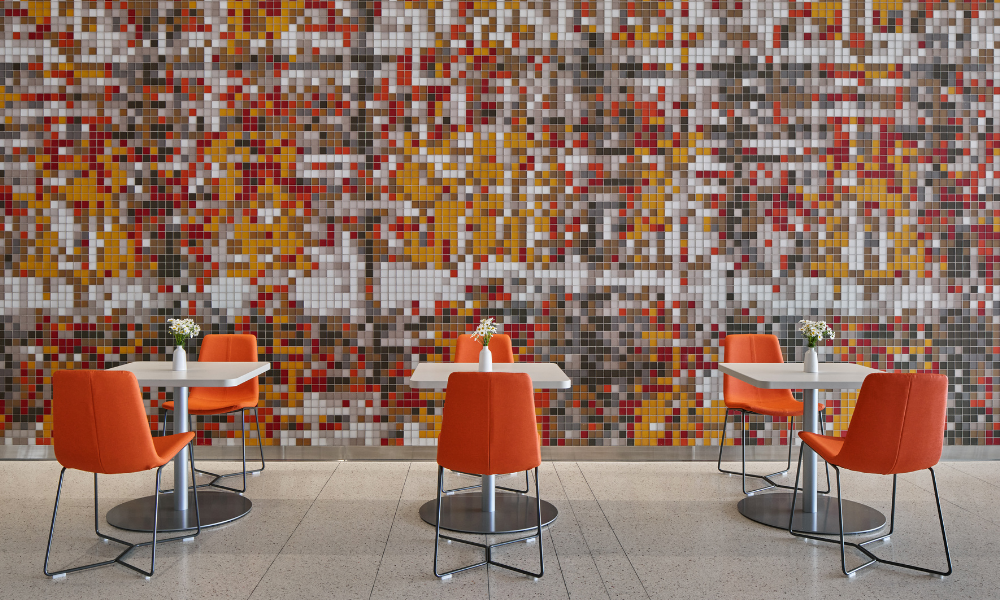
How Responsible Material Selection Shapes EwingCole’s Sustainability Vision: Q&A with Maria Papiez, Director of Sustainable Design
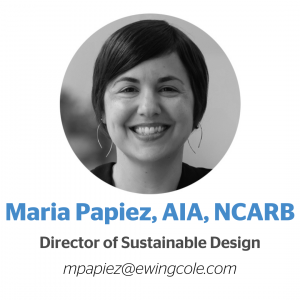 At EwingCole, sustainability is not a separate service—it’s a mindset we’re striving to embed into every project. From energy modeling to material sourcing, our approach aims to create lasting value for people and the planet. We sat down with Maria Papiez, EwingCole’s Director of Sustainable Design, to discuss how material selection plays a critical role in that vision and how the firm is using its Sustainability Action Plan to push the industry forward.
At EwingCole, sustainability is not a separate service—it’s a mindset we’re striving to embed into every project. From energy modeling to material sourcing, our approach aims to create lasting value for people and the planet. We sat down with Maria Papiez, EwingCole’s Director of Sustainable Design, to discuss how material selection plays a critical role in that vision and how the firm is using its Sustainability Action Plan to push the industry forward.
Q: Why is material selection so important in sustainable design?
Maria: It’s one of our most powerful tools as architects, engineers, and designers. Energy use often leads the sustainability conversation – for important reasons – but the materials we choose carry hidden impacts that affect climate, ecosystems, and human health. Every project presents an opportunity to make better, more responsible choices.
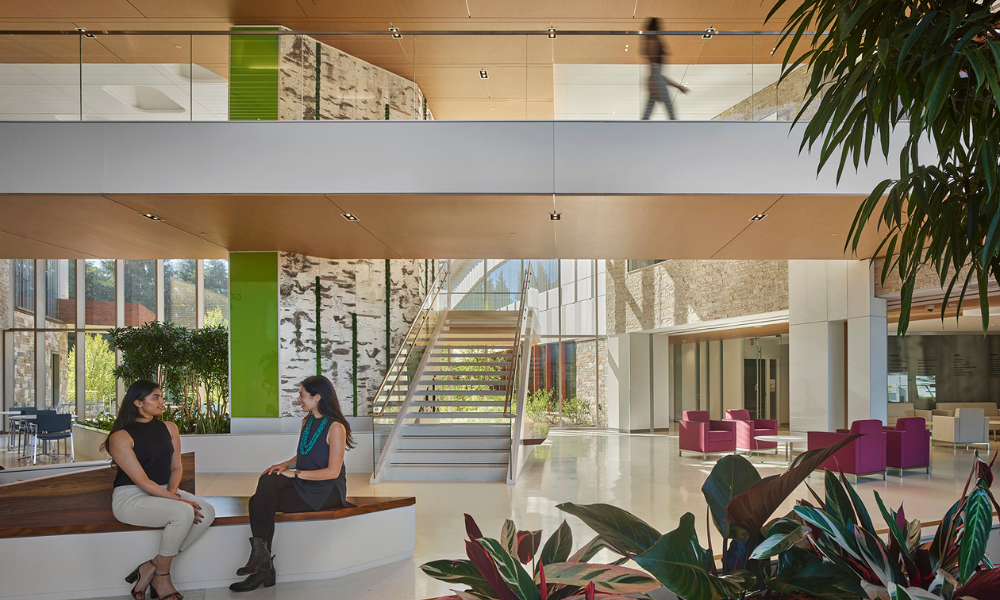
Q: How has your personal career path shaped your work at EwingCole?
Maria: Early in my career, I led the pursuit of LEED Platinum and WELL Silver certifications for a large office renovation. It was my first real deep dive into the human health impacts of materials, and it connected back to my academic background in biology and environmental chemistry. I found myself translating complex material science into actionable design strategies—something I continue to do at EwingCole. That experience showed me how critical material transparency and education are, and it’s a lens I bring to developing our firm’s resources and sustainability goals today.
Q: How does EwingCole approach material selection in practice?
Maria: We use the AIA Materials Pledge as a guiding framework. It outlines five impact categories—Climate Health, Human Health, Ecosystem Health, Social Health and Equity, and Circular Economy—and helps us think holistically. Our teams are already deeply engaged in specifying materials, so the key is giving them the tools and knowledge to make decisions that align with these values.
Q: Can you share examples of how those targets vary across categories?
Maria: Absolutely. We’re moving faster in areas like Human Health and Climate Health because there’s more data available and well-established documentation practices. For Social Equity, Ecosystem Health, and Circularity, we’re laying the groundwork—building awareness and engaging staff through internal training and firmwide dialogue. Each category is on its own timeline, but all are moving toward measurable outcomes. I’ll be sharing more details of this approach as a member of a panel presentation at AIA25 in Boston this coming June.
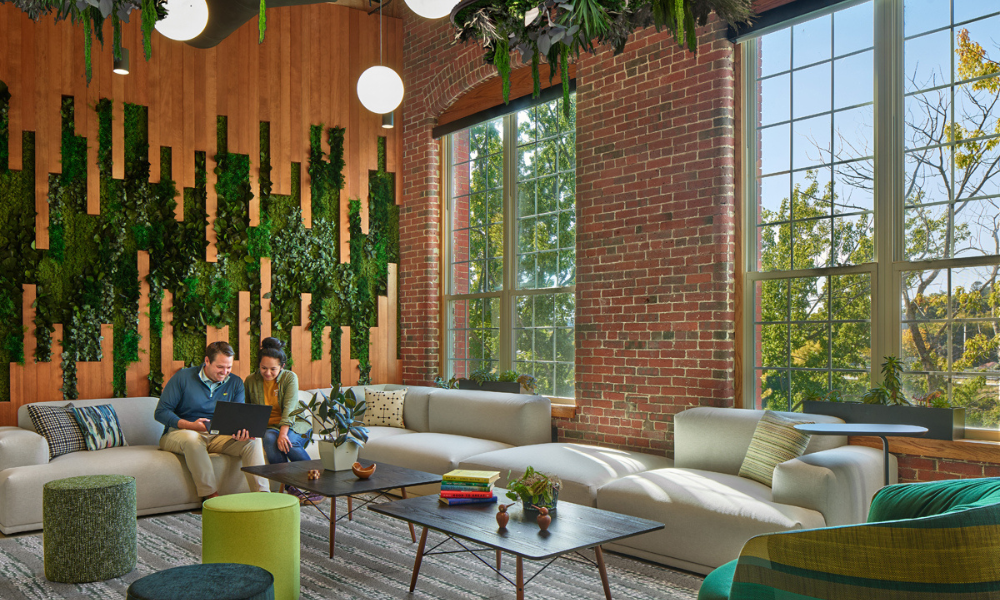
Q: Can you give an example of a project where these strategies were implemented successfully?
Maria: The St. Mary’s Medical Center design is a great example. Our material goals for the project focused on supporting human health, connecting nature and place, and reducing supply chain impacts. Our successes were deeply integrated biophilic design, significant opportunities for views and access to nature, and support of local and regional supply chains for several high-volume materials, including glazing, ceilings, and steel. Looking back, this project aligned with the holistic approach we developed in our SAP two years later – covering Human Health, Climate Health, and beginning to understand Social Health & Equity.
Q: Let’s talk about EwingCole’s Sustainability Action Plan (SAP). What role does it play in this effort?
Maria: The SAP is our firmwide roadmap. It translates our core sustainability commitments—AIA 2030, AIA Materials Pledge, SE 2050, and MEP 2040—into clear, actionable targets. For the Materials Pledge in particular, we created a two-year foundation phase (2023–2025) to update internal resources and educate our teams. From there, we established long-term targets across all five impact areas.
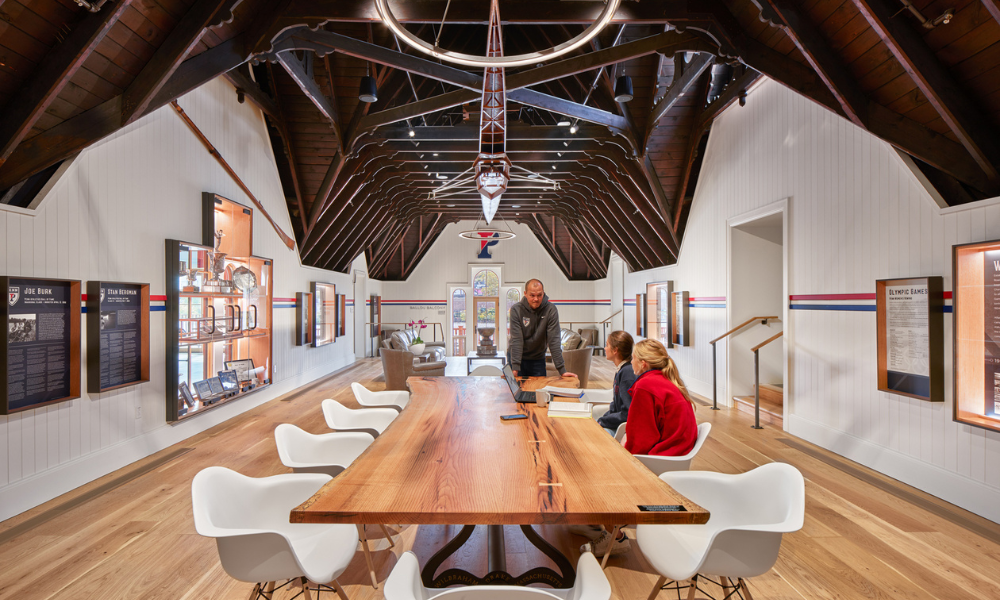
Q: What’s next for EwingCole in advancing this mission?
Maria: We’re working to make sustainability a foundational element of design excellence. That includes continually improving our internal standards, collaborating with partners like Mindful Materials and AIA working groups, and sharing our work externally across the industry and with clients.
Q: Final thoughts—why does this work matter now more than ever?
Maria: Because we already have the power to make better choices, every day, on every project. Holistically responsible material selection isn’t a radical shift—it’s a built-in superpower. In a time where so much feels out of our control, it’s incredibly empowering to know we can make a meaningful impact through the decisions we’re already making.



